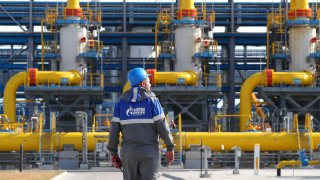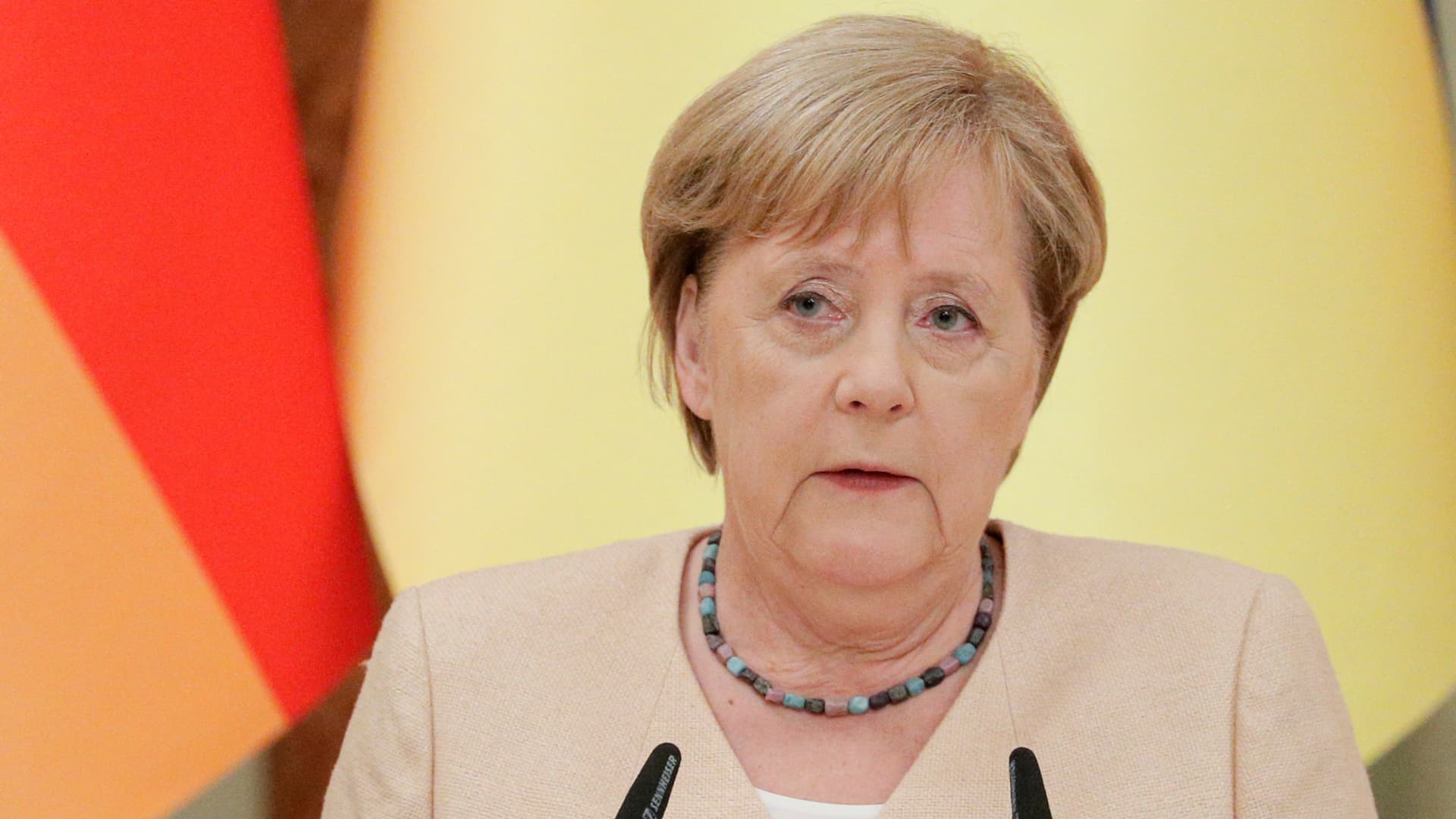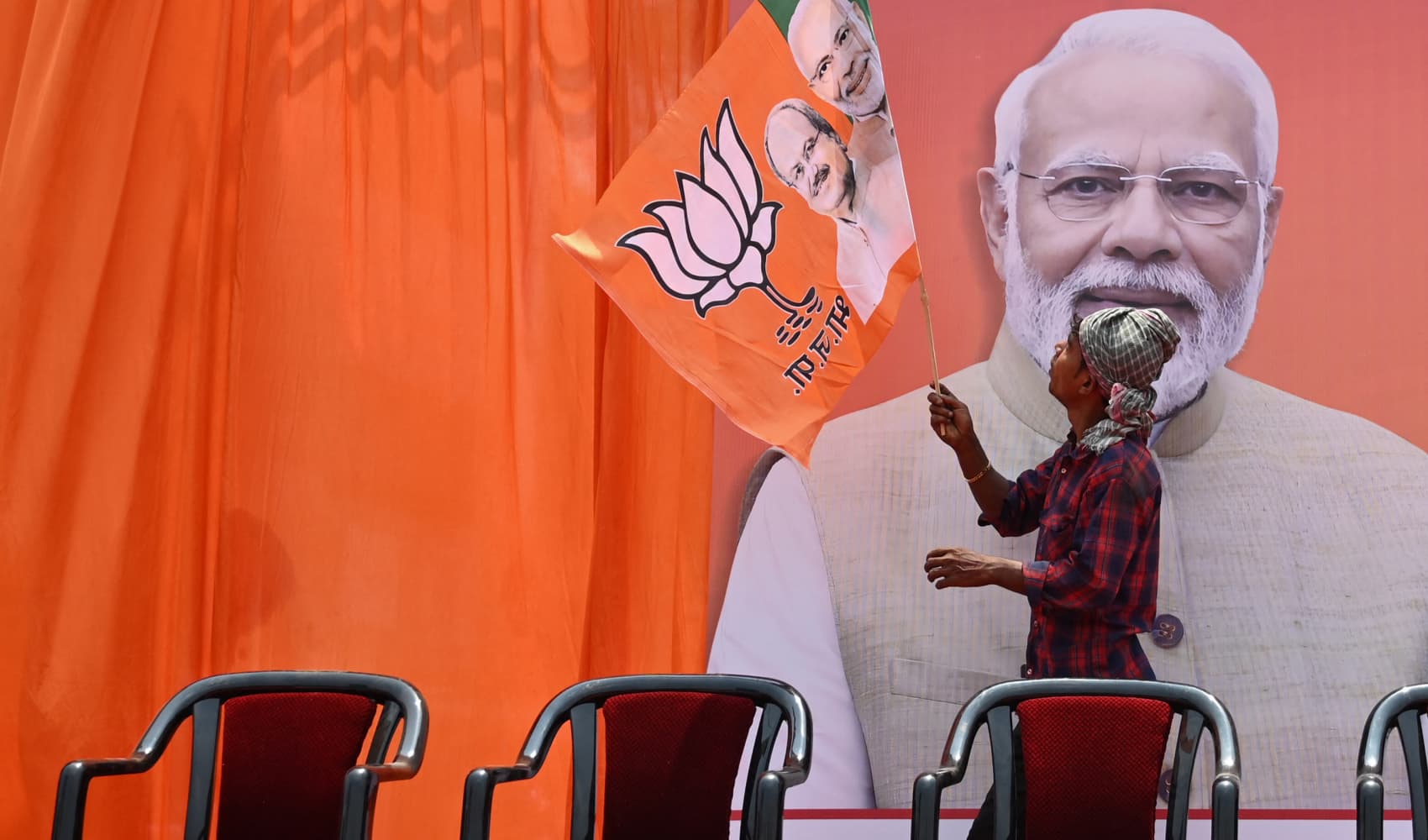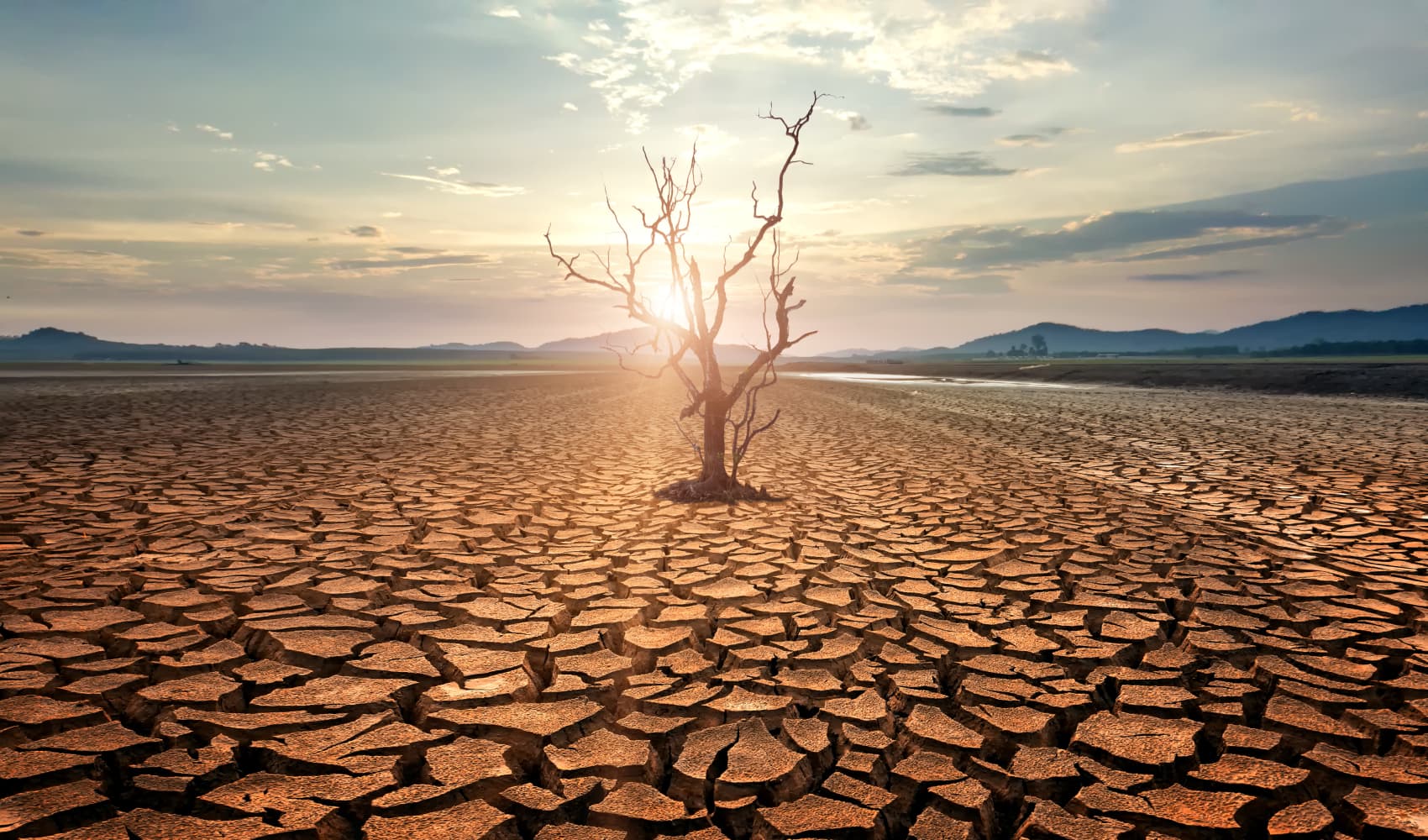
- European piped natural gas supply from Russia has slowed in recent weeks, raising questions about the potential causes behind the drop and its implications for global gas markets.
- It comes shortly after German Chancellor Angela Merkel sought to ease long-running concerns about the nearly completed Nord Stream 2 pipeline, saying further sanctions may be imposed if Moscow used gas "as a weapon."
- Some analysts have suggested Gazprom, Russia's state-owned gas giant, may be limiting its delivery of discretionary natural gas supply to Europe to support its case in starting flows via Nord Stream 2.
LONDON — Russia has slowed the delivery of piped natural gas to Europe in recent weeks, according to analysis from ICIS, a commodity intelligence service, raising questions about the potential causes behind the drop and its implications for global gas markets.
It comes shortly after German Chancellor Angela Merkel sought to ease long-running concerns about the nearly completed Nord Stream 2 pipeline, saying further sanctions may be imposed if Moscow used gas "as a weapon."
The controversial project is designed to deliver Russian gas directly to Germany via the Baltic Sea, bypassing Ukraine and Poland.
Get Southern California news, weather forecasts and entertainment stories to your inbox. Sign up for NBC LA newsletters.
Critics argue the pipeline is not compatible with European climate goals, increases the region's dependence on Russian energy exports, and will most likely strengthen Russian President Vladimir Putin's economic and political influence over the region.
Some analysts have suggested Gazprom, Russia's state-owned gas giant, may be limiting its delivery of discretionary natural gas supply to Europe to support its case in starting flows via Nord Stream 2.
"That's because Gazprom is readying itself for starting Nord Stream 2 and it is hoping to exert an element of leverage in terms of trying to make sure that when all the regulatory t's get crossed and i's get dotted, that that process is as swift as possible," Tom Marzec-Manser, lead European gas analyst at ICIS, told CNBC via telephone.
Money Report
"If there is less gas around than normal and the price is high then it may streamline that process," he added.
When approached for comment, Gazprom referred CNBC to a statement published on its Telegram account Aug. 16. The company described August as "another 'winter' month on the gas market," according to a translation.
An increased load on the gas supply system had coincided with the traditional season of scheduled preventive maintenance and preparation for the fall to winter period, "which cannot be paused," Gazprom said.
"The practice of the last few years both in Russia and in Europe suggests that the winter period has also shifted to the spring month of March. Therefore, now, in the summer, the priority is to pump gas into underground storage facilities," the company said. "This is also very well understood by our European colleagues."
What's going on?
Natural gas flows at the westernmost point of the Yamal pipeline — a strategically important 2,000-kilometer pipeline that runs across four countries: Russia, Belarus, Poland and Germany — dropped to 20 million cubic meters per day in mid-August, according to ICIS. This was down from 49 mcm per day at the end of July, and a sharp fall from its typical rate of 81 mcm per day.
What's more, European piped natural gas supply from Russia is expected to slip even further in September.
Marzec-Manser said that for Russia to move gas through neighboring energy community states, such as Ukraine, it must first purchase access to a pipeline, "like a toll road." The Nord Stream 1 route is an option, although this is already owned by Gazprom, and is flowing at capacity. The Yamal pipeline is a second major route and, until the end of July, was running at close to capacity as expected.
"Thirdly, you have the Ukrainian route which obviously comes with a lot of political baggage," he continued. "It is the only other way you are going to get gas from Russia to Europe in any significant volume."
Gazprom typically efficiently uses its booked EU pipe capacity, Marzec-Manser said, but an unexpected drop in volumes at the end of July along the Yamal pipeline "immediately indicated something was amiss."
Natural gas flows to Europe dropped again shortly thereafter following a fire at a condensate plant in the Siberian city of Novy Urengoy.
As a result, external observers of Gazprom closely monitored interruptible monthly capacity auctions via Ukraine. These auctions are widely seen as a key signal to the market of upcoming volumes because they take place two to three weeks prior to the month in which natural gas flows.
A string of no-shows at each auction prompted analysts to question whether absent capacity bookings via Ukraine were as much to do with Gazprom's inability to supply as opposed to its unwillingness to deliver.
"If true, this has serious implications on how the global gas and LNG [liquefied natural gas] market treats Russian pipe volumes and the availability — or not — of its discretionary supply," Marzec-Manser said.
Another theory, although analysts consider it somewhat less likely, is that because Gazprom believes Nord Stream 2 will soon be fully operational, it may not need to book further capacity elsewhere.

Valentina Bonetti, senior gas analyst of EMEA at S&P Global Platts, told CNBC that the firm regards the recent drop in Russian flows to Europe "as a consequence caused by a physical upstream issue" that is taking longer than expected to return to full flows.
"Gazprom has long prided itself on being very reliable and prompt in restoring supply after accidents," Bonetti said. However, she argued the company's recent pivot to a "value-over-volume strategy" had tested the company's ability to restore natural gas flows and put pressure on the EU to allow a smooth start up of Nord Stream 2.
While Gazprom is currently producing above the five-year range, Bonetti said it needs significant amounts of gas for both domestic storage injections as well as much higher year-on-year exports to Turkey. This "may exacerbate their value-over-volume strategy for exports to Europe."
S&P Global Platts believes Russian flows to Europe will recover gradually in the coming weeks and expects Nord Stream flows to start in October, saying Gazprom's recent actions and statements seem to confirm a relatively imminent start.
Record high gas prices
European gas market prices have skyrocketed more than 116% since the start of the year, with the ICIS TTF benchmark closing at an all-time high of 47.86 euros ($56.17) per megawatt-hour on Aug. 16. It is reflective of a tight market, with Europe facing incredibly low natural gas storage levels and rebounding Asian and South American LNG demand.
The contract was last seen trading at around 43.2 euros, following news Gazprom reportedly plans to supply 5.6 billion cubic meters of gas to Europe this year.
"The current drop in gas deliveries and increase withdrawals from storage, which is elevating gas prices across Europe and benefitting Moscow, is firstly a commercial tactic to help Russia at a time when gas demand around the globe is high," said Kristine Berzina, a senior fellow at the Alliance for Securing Democracy, a national security advocacy group. "But it also shows Europe just how dependent it is on Russia for its gas."

Berzina said it was "notable" for Merkel to threaten sanctions in case Nord Stream 2 was used as a weapon but questioned how Germany or Europe would determine that to be the case.
"Will a slow rise in gas prices that have a geopolitical underpinning be considered a 'weapon'? … Or will only dramatic cutoffs be considered a 'weapon'?"
"Europe will be like a frog in boiling water, not noticing that it is in trouble until it is too late," Berzina said. "Russia has lots of room to create scenarios that are painful for Europe but do not cross critical thresholds. Doing so, in fact, would be advantageous to Russia both financially and politically."






